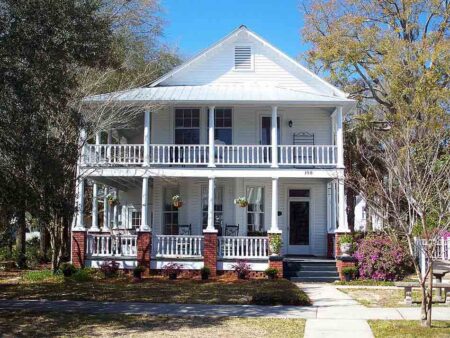In North Florida, it is possible for a lawn to look picture perfect one year and decline the very next year. The causes of problems in our lawns can be complicated involving environmental conditions, pests, and poor maintenance.
In North Florida, it is possible for a lawn to look picture perfect one year and decline the very next year. The causes of problems in our lawns can be complicated involving environmental conditions, pests, and poor maintenance. To appreciate the challenges of maintaining a Florida lawn, it may help to understand the history of our lawn grasses.
Our lawn grasses are not native to the United States. Bahiagrass, originally used as a pasture grass, was introduced to the U.S. in 1914 from Brazil. In 1938, E.H. Finlayson, a County Extension Agent, discovered what was eventually named Pensacola bahiagrass on a sodded bank in Escambia County, Florida. It’s thought the seeds came in on a ship from South America. Bermudagrass is a native of Africa and was brought to the U.S. in 1751. Bermudagrass has been used in pastures, hayfields, athletic fields, and home lawns.
Centipedegrass, one of the more common lawn grasses in our area, was brought to the U.S. in 1918 from China by Frank N. Meyer, a plant explorer. St. Augustinegrass, another common lawn grass in Florida, was discovered growing in South Carolina in 1788. Its origin isn’t known prior to this time; however, it’s believed to be native to the West Indies. Zoysiagrass was introduced from Asia during the late 1800s. Currently, there are newer zoysiagrass cultivars that are used as lawn grasses in Florida.
It’s surprising to some people to learn that our lawn grasses are not native. Not understanding these lawn grasses sometimes results in common lawn maintenance mistakes.
Correcting four common mistakes can result in a better lawn.
- The first step in correctly managing a Florida lawn is to know the type of grass you have, but many homeowners don’t know.
- Many homeowners do not know the size of their lawns. As a result, too much fertilizer and pesticides are applied.
- Many home lawns are irrigated incorrectly.
- Some homeowners mow their lawns too low. This results in the lawn becoming weak and thin. Weeds then move in where the lawn is thin.
Larry Williams is the Extension horticulture agent with the Okaloosa County Cooperative Extension Service, University of Florida. Contact Larry at 689-5850 or email lwilliams@myokaloosa.com.






